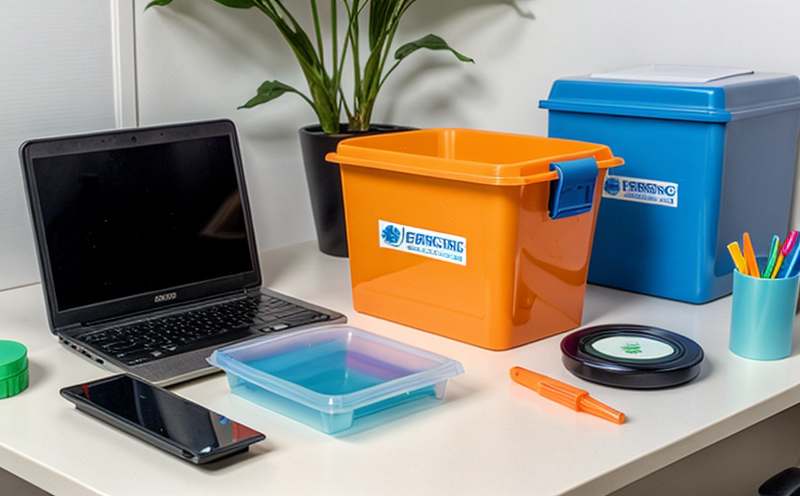Dielectric Withstand Voltage Hipot Test
The dielectric withstand voltage hipot (high insulation resistance test) is a critical electrical safety test used to assess the integrity of insulating materials in office and stationery plastics. This test ensures that the product can operate safely under normal conditions without causing a short circuit or exposing users to electric shock hazards.
The primary purpose of this test is to evaluate how well the dielectric material (like plastic) resists breakdown when subjected to high voltage. The test involves applying an alternating current (AC) voltage between the conductive parts and the non-conductive parts of the product for a specified time, typically 1 minute.
For office and stationery plastics such as pens, rulers, and staplers, this test is essential because these products are often handled frequently by users. Ensuring that the insulating properties remain intact helps prevent accidental short circuits or electrical shocks during use. The hipot test is particularly important for products with exposed metal parts or those intended to be used in environments where moisture might exacerbate insulation failures.
The testing process begins with careful preparation of the specimen. This includes cleaning the surface of the plastic product to remove any contaminants that could affect the test results. The sample must then be clamped into a hipot tester, ensuring proper contact between the electrodes and the conductive parts of the item being tested.
The chosen voltage for testing depends on factors such as the size and type of the product, but it is generally set above the expected operating voltage by several multiples to ensure that any weaknesses in insulation are exposed. For example, a pen with metallic components might be subjected to 2500V AC.
| Parameter | Description |
|---|---|
| Voltage Applied (AC) | 2500V, 1 minute duration |
| Test Frequency | 60 Hz |
| Sampling Rate | Continuous monitoring |
- This test ensures that office and stationery plastics do not allow unintended current flow under specified conditions.
- The hipot test helps identify potential defects in the insulation of plastic parts, thus enhancing product safety.
Benefits
The dielectric withstand voltage hipot test offers several significant advantages to manufacturers and quality assurance teams:
- Enhanced Product Safety: By ensuring that the product's insulation remains intact, this test minimizes risks associated with electrical shocks or short circuits.
- Compliance with Standards: It helps in meeting international standards such as UL 94 for plastic flammability ratings and IEC 60335 for safety requirements of household appliances. These compliance aspects are crucial for export products to meet global market regulations.
- Improved Quality Control: Regular hipot testing ensures that every batch meets the required standards, thereby improving overall product reliability and customer satisfaction.
Environmental and Sustainability Contributions
The use of dielectric withstand voltage hipot tests in office and stationery plastics contributes positively to environmental sustainability. By ensuring that the products are safe for regular use, these tests prevent accidents and injuries, which could lead to increased waste generation from discarded items due to customer dissatisfaction or product failures.
Furthermore, by maintaining high-quality standards through rigorous testing, manufacturers can reduce the need for frequent replacements of defective products. This leads to a lower demand for raw materials in production processes since fewer returns and rejections occur. Additionally, compliant products contribute to safer work environments, reducing the environmental impact associated with occupational health incidents.
| Action Taken | Result |
|---|---|
| Implementing hipot testing for office and stationery plastics | Reduces product defects, lowering waste generation |
| Maintaining compliance with international safety standards | Avoids recalls and returns that generate additional environmental burdens |
- Reduces the need for frequent replacements of defective products.
- Promotes safer use, enhancing overall product reliability.
Use Cases and Application Examples
The dielectric withstand voltage hipot test is widely used in the office & stationery plastics sector to ensure the safety of various products. Here are some specific examples:
| Product Type | Description |
|---|---|
| Pens with metallic tips | To ensure that the metal part does not short out the ink reservoir. |
| Staplers with exposed spring mechanisms | To prevent electrical hazards in case of moisture contact. |
| Rulers with metallic edges | To verify that the metal does not conduct electricity, posing a shock risk. |
- For pens: Ensuring that the ink reservoir and metallic tip do not short out when in use.
- For staplers: Preventing electrical hazards if moisture comes into contact with the exposed metal parts.
- For rulers: Confirming that the metal edges are not conductive, thus avoiding shock risks during handling.





